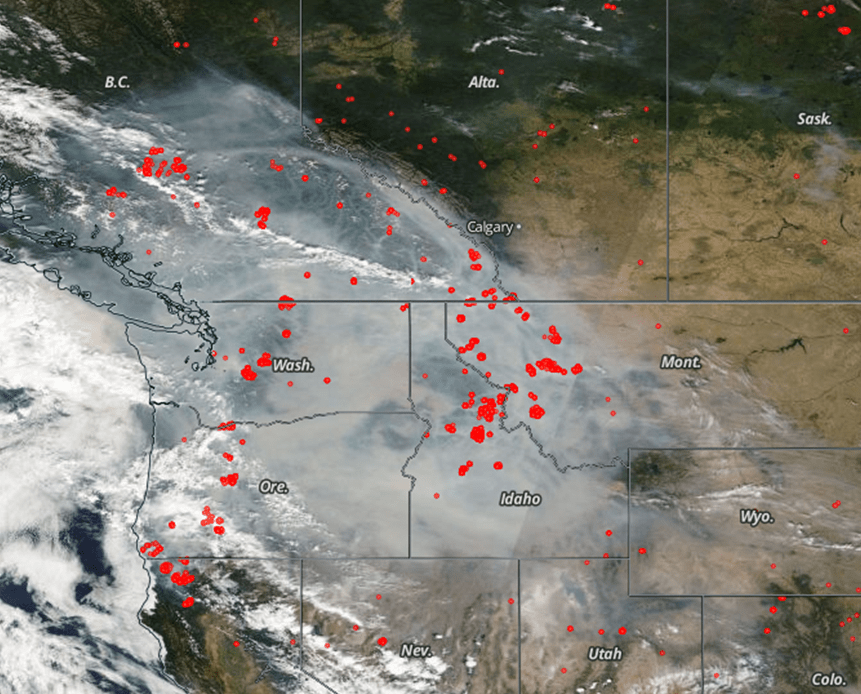
New research by James Laing and Dan Jaffe shows how increases in wildfire smoke have impacted air quality in the western US. Their recent paper, published in the June 2019 issue of EM—The Magazine for Environmental Managers, describes the changing air quality picture for western states. Even though air quality in most of the US has improved in the last four decades, due in large part to the US Clean Air Act regulations, it is not improving in much of the western US. The reason for the decrease in air quality in western states is wildfire smoke.
In 2017 and 2018, wildfires caused the largest daily mean concentrations of fine particulate matter (PM2.5; particles with diameter less than 2.5 μm) ever measured at monitoring sites in the US. Some of the extreme PM2.5 events of 2017–2018 include the following:
- Seeley Lake, Montana, September 6, 2017—Highest daily PM2.5 on record (642 μg/m3). In August-September 2017, there were 35 days with PM2.5 > 150 μg/m3 and 18 with PM2.5 > 250 μg/m3.
- Ventura, California, December 6, 2017—PM2.5 of 557 μg/m3, with a two-week average concentration of 165 μg/m3.
- Seattle, Washington, August 21, 2018—Highest daily PM2.5 ever recorded in Seattle (110 μg/m3).
- Medford, Oregon, September 6, 2017—Highest daily PM2.5 ever recorded in Medford (268 μg/m3), and eight days over 100 μg/m3 in 2017.
To put these measurements in context, the US Environmental Protection Agency (EPA) has set the daily PM2.5 standard at 35 μg/m3 (98th percentile < 35 μg/m3, averaged over 3 years). The EPA has also defined PM2.5 > 150 μg/m3 as very unhealthy and PM2.5 > 250 μg/m3 as hazardous. PM2.5 is such a health hazard because it can travel deep into the respiratory system due to its small size. Despite the gains in air quality in the US, about 30 million people live where the PM2.5 standard is not being met.
The estimated increase in the number and size of wildfires in the future raises issues for public officials and environmental managers. Complying with air quality standards and reducing human exposure to PM2.5 are causes for concern in the western US now and going forward.